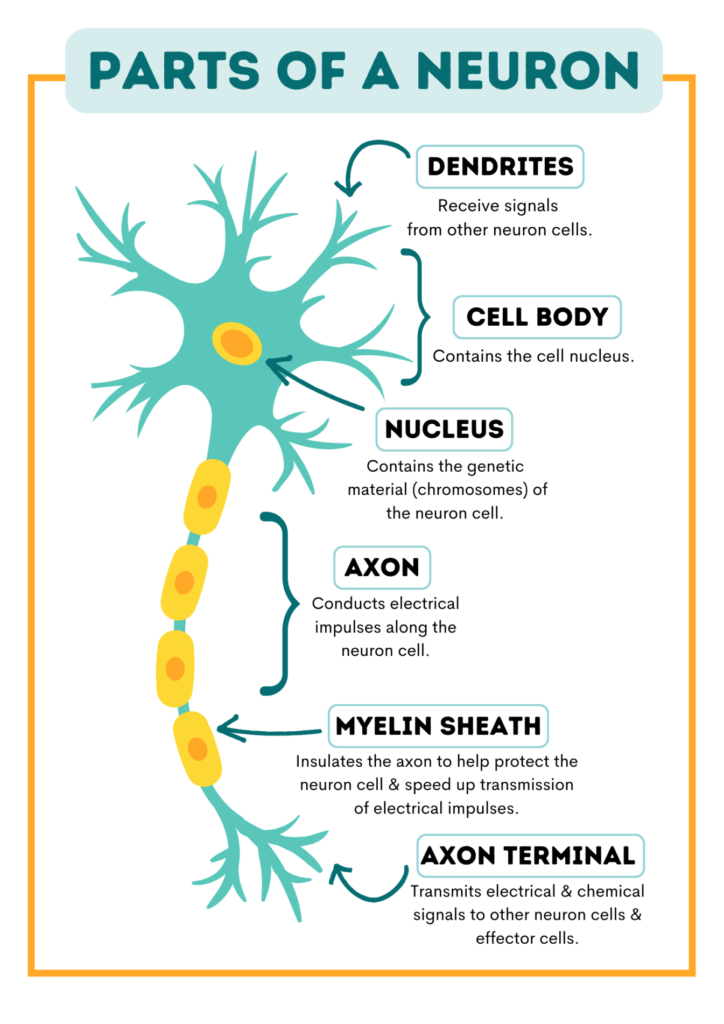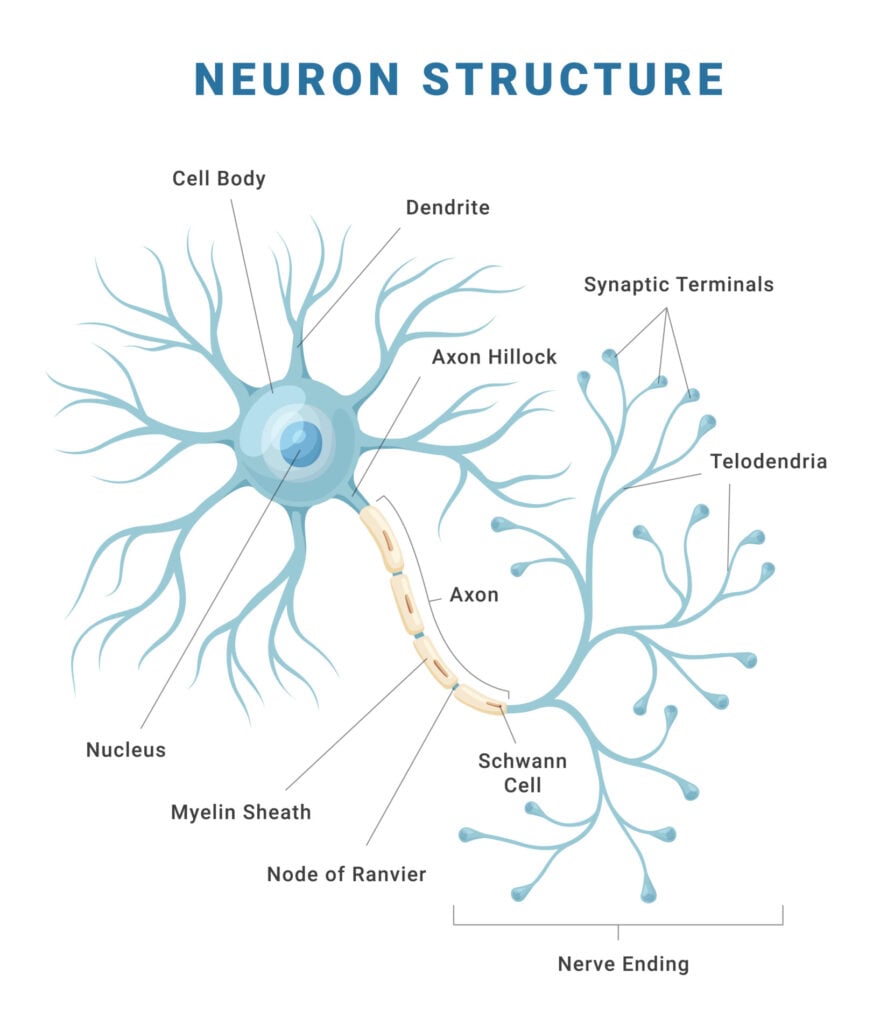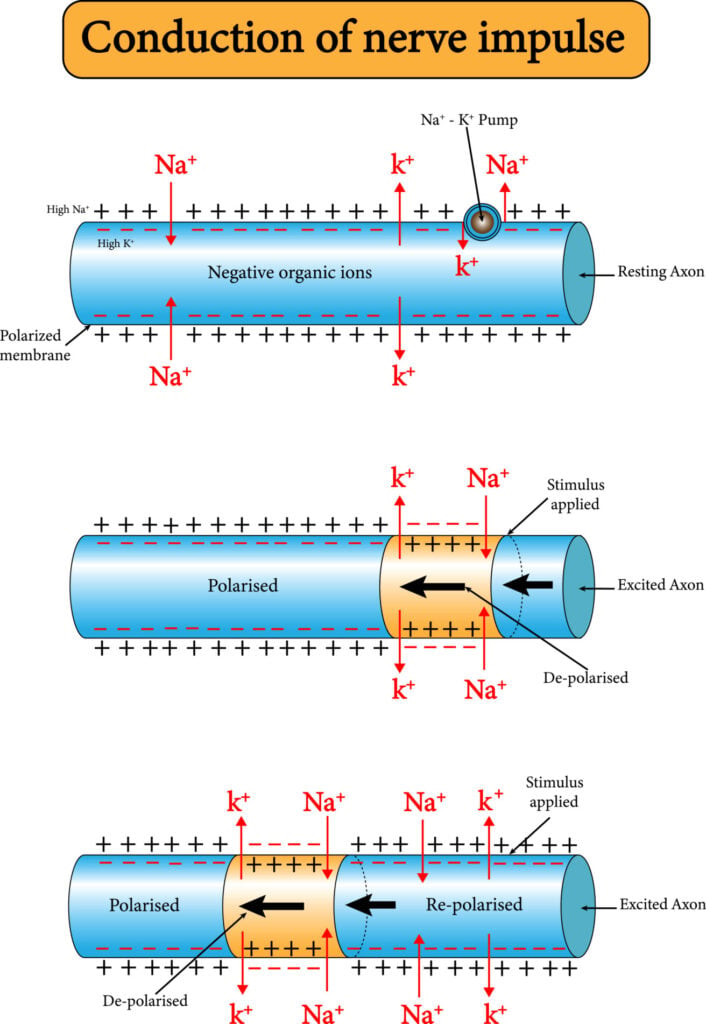Neurons, also known as nerve cells, are essentially the cells that make up the brain and the nervous system. Neurons do not touch each other, but where one neuron comes close to another neuron, a synapse is formed between the two.
According to new research, the human brain contains around 86 billion neurons (Herculano-Houzel, 2009). These cells develop fully around the time of birth but, unlike other cells, cannot reproduce or regenerate once they die.

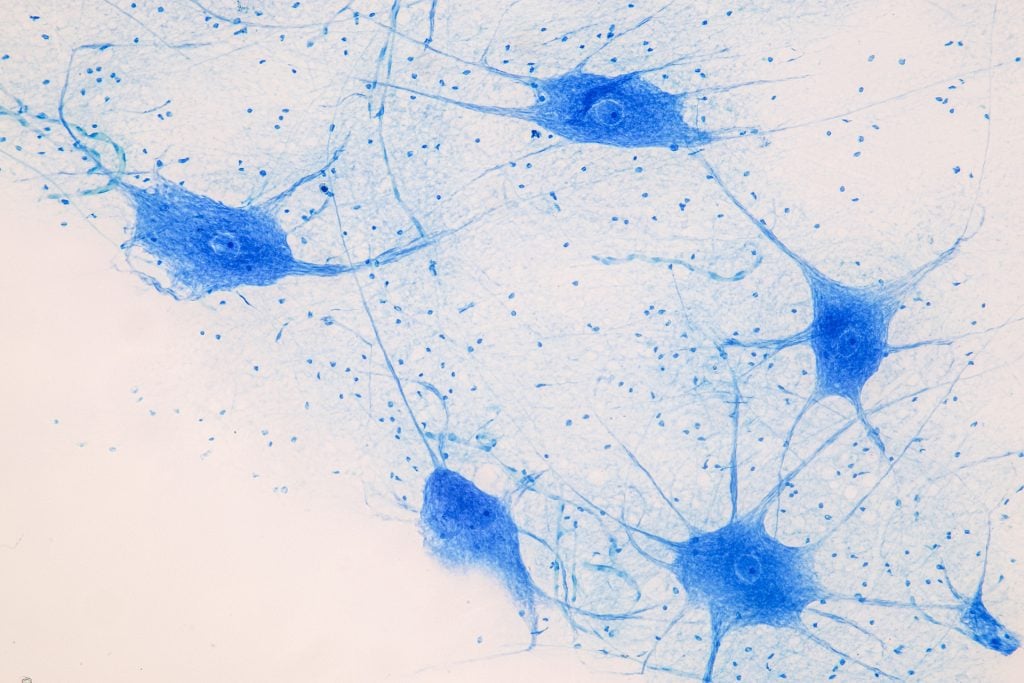
How do Neurons Work?
Neurons lie adjacent to each other but are not connected. There is a tiny gap between neurons called a synapse.
The function of a neuron is to transmit nerve impulses along the length of an individual neuron and across the synapse into the next neuron. The electrical signals transmitted by neurons are called action potentials.
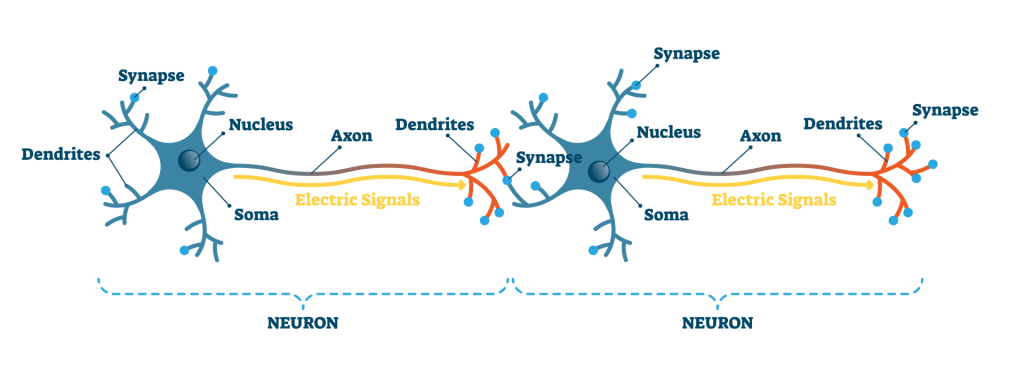
The electrical signal needs to cross the synaptic gap to continue on its journey to or from the CNS. This is done using chemicals that diffuse across the gap between the two neurons. These chemicals are called neurotransmitters.
During synaptic transmission, the action potential (an electrical impulse) triggers the synaptic vesicles of the pre-synaptic neuron to release neurotransmitters (a chemical message).
These neurotransmitters diffuse across the synaptic gap (the gap between the pre and post-synaptic neurons) and bind to specialized receptor sites on the post-synaptic neuron. This will then trigger an electrical impulse in the adjacent cell.
The central nervous system, which comprises the brain and spinal cord, and the peripheral nervous system, which consists of sensory and motor nerve cells, all contain these information-processing neurons.
What are the Parts of a Neuron?
The neuron contains the soma (cell body), which extends the axon (a nerve fiber conducting electrical impulses away from the soma), and dendrites (tree-like structures that receive signals from other neurons). The myelin sheath is an insulating layer that forms around the axon and allows nerve impulses to transmit more rapidly along the axon.
Neurons do not touch each other, and there is a gap, called the synapse, between the axon of one neuron and the dendrite of the next.
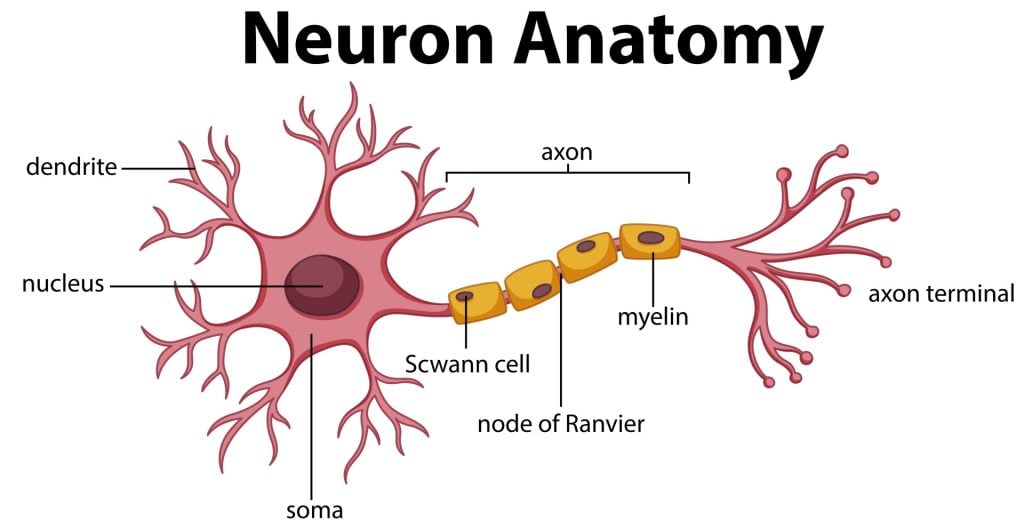
The unique structure of neurons permits it to receive and carry messages to other neurons and throughout the body.
Dendrites
Dendrites are the tree-root-shaped part of the neuron which are usually shorter and more numerous than axons. Their purpose is to receive information from other neurons and to transmit electrical signals to the cell body.
Dendrites are covered in synapses, which allow them to receive signals from other neurons. Some neurons have short dendrites, whilst others have longer ones.
In the central nervous system, neurons are long and have complex branches that allow them to receive signals from many other neurons.
For instance, cells called Purkinje cells, which are found in the cerebellum, have highly developed dendrites to receive signals from thousands of other cells.
Soma (Cell Body)
The soma, or cell body, is essentially the core of the neuron. The soma’s function is to maintain the cell and to keep the neuron functioning efficiently (Luengo-Sanchez et al., 2015).
The soma is enclosed by a membrane that protects it but also allows it to interact with its immediate surroundings.
The soma contains a cell nucleus that produces genetic information and directs the synthesis of proteins. These proteins are vital for other parts of the neuron to function.
Axon
The axon, also called a nerve fiber, is a tail-like structure of the neuron that joins the cell body at a junction called the axon hillock.
The function of the axon is to carry signals away from the cell body to the terminal buttons to transmit electrical signals to other neurons. Acting as a conduit, the axon carries these signals to other neurons, muscles, or glands.
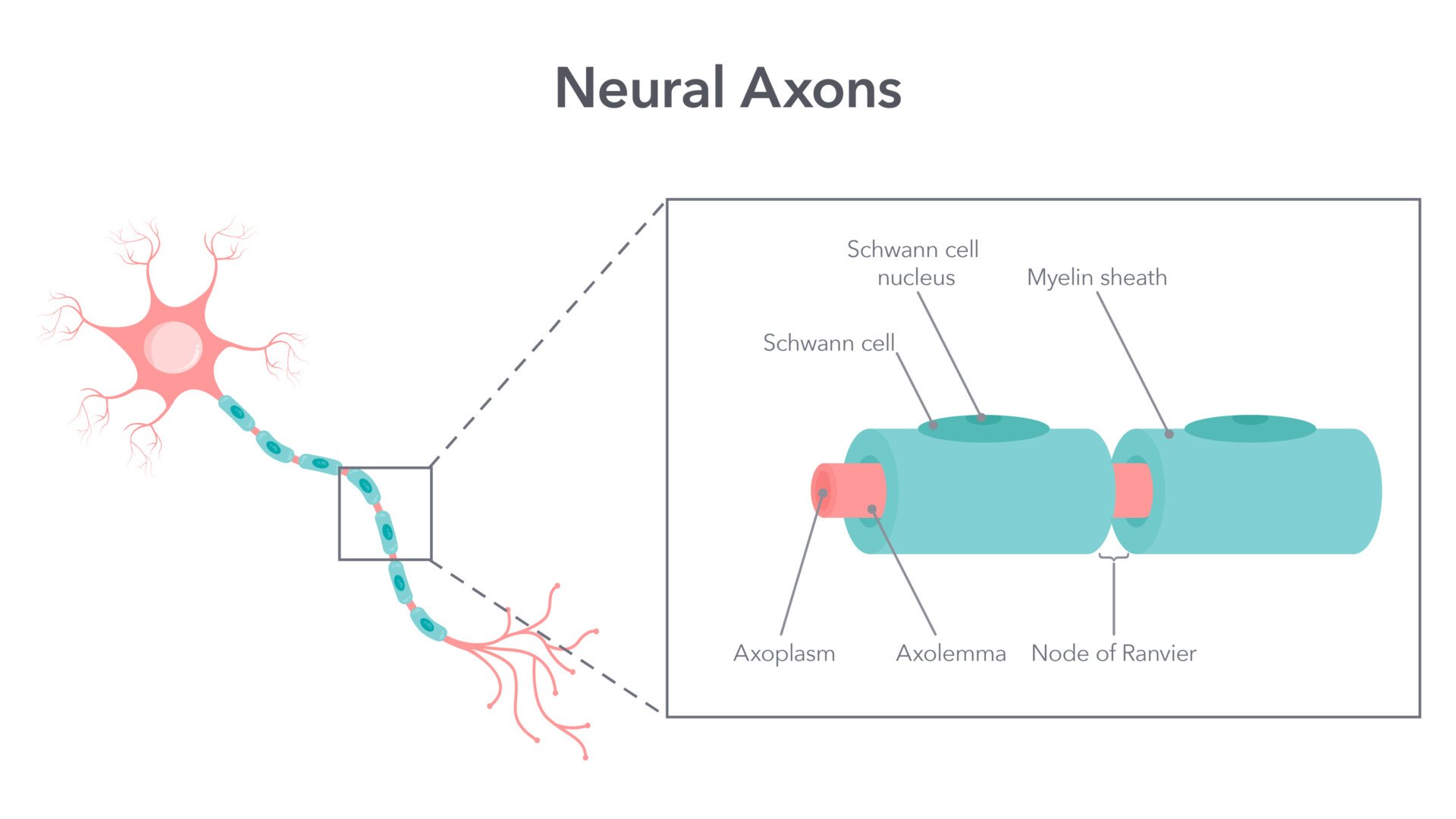
Most neurons have one axon, which can range in size from 0.1 millimeters to over 3 feet (Miller & Zachary, 2017). Some axons are covered in a fatty substance called myelin, which insulates the axon and aids in transmitting signals more quickly.
Axoplasm is the cytoplasm within an axon. It is responsible for transporting proteins, organelles, and other cellular components from the neuron’s cell body to the synaptic terminals and vice versa. This transport is crucial for the maintenance and function of the axon.
At the end of the axon, synaptic terminals release neurotransmitters, facilitating communication with target cells at specialized junctions called synapses.
Myelin Sheath
The myelin sheath is a layer of fatty material that covers the axons of neurons. Its purpose is to insulate one nerve cell from another and to prevent the impulse from one neuron from interfering with the impulse from another.
The second function of the myelin sheath is to speed up the conduction of nerve impulses along the axon.
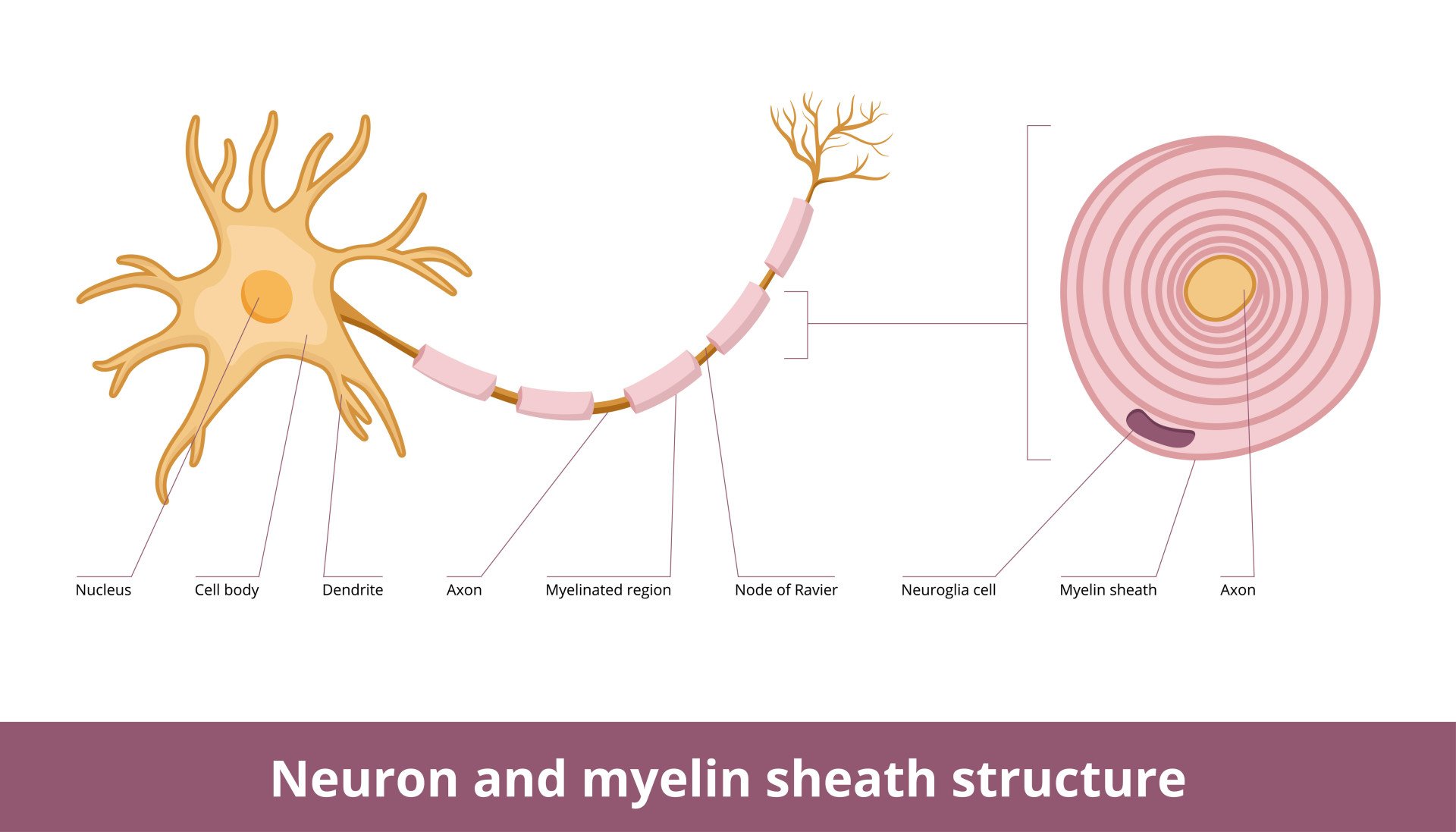
The axons, which are wrapped in cells known as glial cells (also known as oligodendrocytes and Schwann cells), form the myelin sheath.
The myelin sheath which surrounds these neurons has a purpose to insulate and protect the axon. Due to this protection, the speed of transmission to other neurons is a lot faster than the neurons that are unmyelinated.
The myelin sheath is made up of broken-up gaps called nodes of Ranvier. Electrical signals are able to jump between the nodes of Ranvier, which helps in speeding up the transmission of signals.
Axon Terminals
Located at the end of the neuron, the axon terminals (terminal buttons) are responsible for transmitting signals to other neurons.
At the end of the terminal button is a gap, which is known as a synapse. Terminal buttons hold vessels that contain neurotransmitters.
Neurotransmitters are released from the terminal buttons into the synapse and carry signals across the synapse to other neurons. The electrical signals convert to chemical signals during this process.
It is then the responsibility of the terminal buttons to reuptake the excess neurotransmitters which did not get passed onto the next neuron.
Types of Neurons
Although there are billions of neurons and vast variations, neurons can be classified into three basic groups depending on their function: sensory neurons (long dendrites and short axons), motor neurons (short dendrites and long axons), and relay neurons (short dendrites and short or long axons).
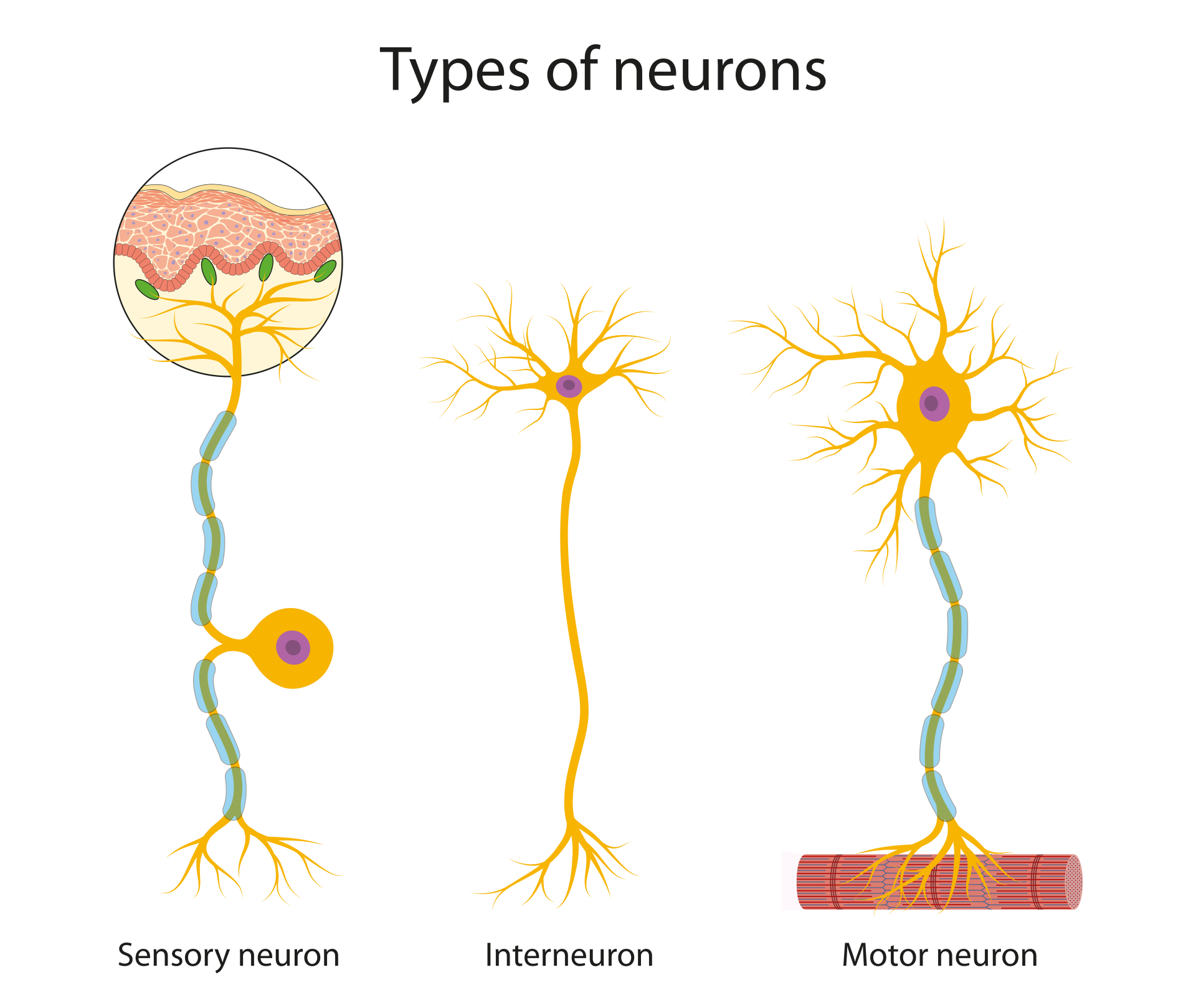
Sensory Neurons
Sensory neurons (sometimes referred to as afferent neurons) are nerve cells that carry nerve impulses from sensory receptors toward the central nervous system and brain.
When these nerve impulses reach the brain, they are translated into ‘sensations’, such as vision, hearing, taste, and touch.
This sensory information can be either physical – through sound, heat, touch, and light, or it can be chemical – through taste or smell. An example of this can be when touching an extremely hot surface. Once this happens, the sensory neurons will send signals to the central nervous system about the information they have received.
Most sensory neurons are characterized as being pseudounipolar. This means that they have one axon which is split into two branches.
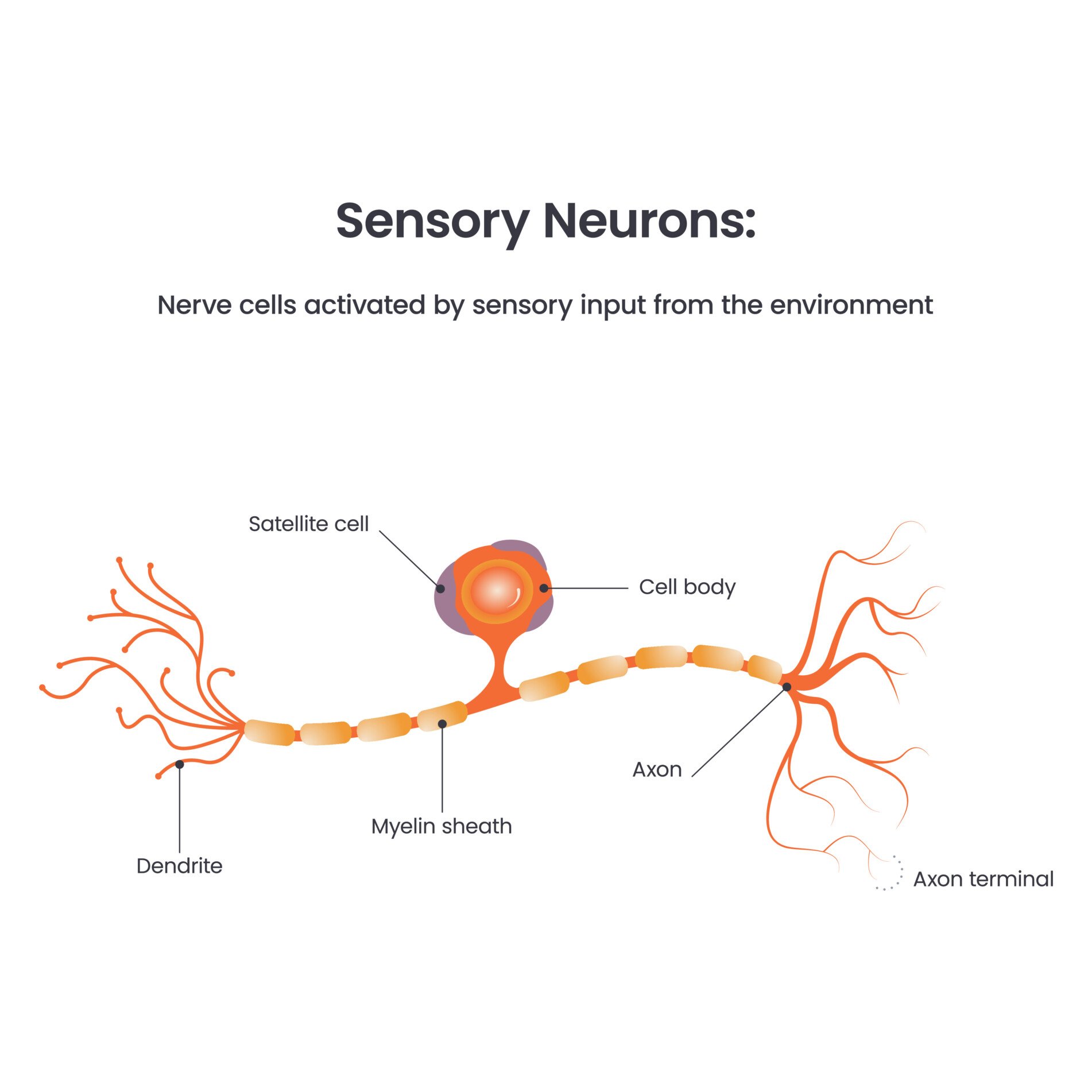
Motor Neurons
Motor neurons (also referred to as efferent neurons) are the nerve cells responsible for carrying signals away from the central nervous system towards muscles to cause movement. They release neurotransmitters to trigger responses leading to muscle movement.
Motor neurons are located in the brainstem or spinal cord (parts of the central nervous system) and connect to muscles, glands, and organs throughout the body.
These neurons transmit signals from the spinal cord and brainstem to skeletal and smooth muscle to directly or indirectly control muscle movements.
For instance, after touching a hot surface with your hand, the sensory neurons receive the message. The motor neurons then cause the hand to move away from the hot surface.
There are two types of motor neurons:
- Lower motor neurons – these are neurons that travel from the spinal cord to the muscles of the body.
- Upper motor neurons – these are neurons that travel between the brain and the spinal cord.
Motor neurons are characterized as being multipolar. This means they have one axon and several dendrites projecting from the cell body.
Relay Neurons
A relay neuron (also known as an interneuron) allows sensory and motor neurons to communicate with each other. Relay neurons connect various neurons within the brain and spinal cord and are easy to recognize due to their short axons.
Alike to motor neurons, interneurons are multipolar. This means they have one axon and several dendrites.
As well as acting as a connection between neurons, interneurons can also communicate with each other by forming circuits of differing complexities.
The communication between interneurons assists the brain in completing complex functions such as learning and decision-making, as well as playing a vital role in reflexes and neurogenesis – which means the regeneration of new neurons.
References
Herculano-Houzel, S. (2009). The human brain in numbers: a linearly scaled-up primate brain. Frontiers in human neuroscience, 3, 31.
Luengo-Sanchez, S., Bielza, C., Benavides-Piccione, R., Fernaud-Espinosa, I., DeFelipe, J., & Larrañaga, P. (2015). A univocal definition of the neuronal soma morphology using Gaussian mixture models. Frontiers in neuroanatomy, 9, 137.
Miller, M. A., & Zachary, J. F. (2017). Mechanisms and morphology of cellular injury, adaptation, and death. Pathologic basis of veterinary disease, 2.
Further Information
